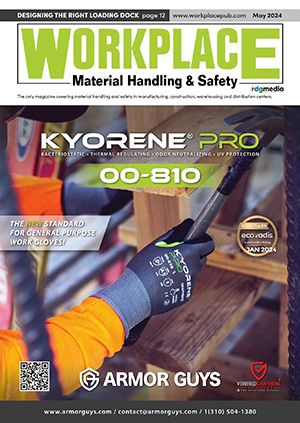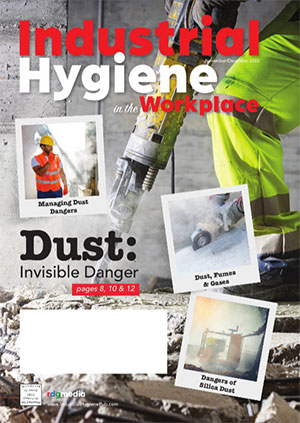10 Safety Tips Forklift Operators Should Keep Top-of-Mind
Jeremy Wishart, Contributor
The only thing more important than keeping employees productive is keeping them safe—especially in the material handling industry, where heavy equipment is everywhere. It’s critical to the safety of equipment operators and other facility employees to not get complacent around equipment, like forklifts, even though they’re a common sight in most warehouses and facilities.
Forklifts and material handling equipment are the backbone to any productive facility. In order to keep operators safe and, ultimately, keep material moving, proper safety measures must be maintained.
Here are several important safety reminders to help operators ensure safe, smooth operation and prevent workplace accidents:
- Examine equipment before use. Operators should complete a routine check of the equipment before driving. Any noted damages or problems should be reported to management and the forklift should not be operated, if it needs to be repaired.
- Wear appropriate personal protective equipment as provided by employer. Hard hats, protective footwear and high-visibility clothing are recommended as a minimum when working around forklifts.
- Buckle up. Overturned forklifts are a leading cause of forklift-related accidents and fatalities. By buckling up while in a sit-down forklift, operators can save themselves from getting crushed by the machine’s overhead guard or roll cage in the event of an accident.
- Don’t surpass a forklift’s weight capacity. Keeping loads within the weight capacity can decrease the risk of tipping the machine.
- Operate at a safe speed, use horn when vision is obstructed and use caution on grades or ramps. Forklift operators should sound their horn in locations when vision is obstructed. This helps alert pedestrians or other operators to avoid unnecessary collisions. Operators should also take corners and turns slowly to minimize the risk of tipping. Changes in direction or any stops should be made gradually and slowly, too.
- Set parking brake, lower forks and set controls to neutral when finished operating. Safely parked machines reduce the risk of unintended movement when left unattended. If a forklift is parked on an incline, employees can further secure the machine with wheel blocks.
When it comes to choosing a fuel for a forklift fleet, many managers and operators choose propane over gas or diesel for a variety of reasons. Propane-powered forklifts are called upon in a variety of material handling operations to keep business on schedule and work around the clock. Not to mention, propane can be the safest fuel of any to power a forklift fleet.
For facilities already operating propane forklifts or those looking to operate propane forklifts in the future, here are a few propane-specific safety reminders:
- Inspect propane cylinders prior to operation. Check cylinders for rusting, dents, gouges and leaks. Cylinders that show signs of wear or leaks shouldn’t be used and may need to be replaced, even if within the cylinder’s requalification date. A facility’s propane supplier will inspect cylinders each time they’re exchange too, removing any damaged cylinders from service.
- Store propane cylinders in a secure rack or cage. The facility’s propane supplier can help determine the best location for the cylinder storage rack or cage, which is generally located away from exits, stairways, entryways, and high-traffic areas. The cylinders can be stored horizontally with the pressure relief valves in the uppermost position, and operators should use proper lifting techniques when removing cylinders from storage and placing onto a forklift. The propane supplier will also supply training for any operators who need to learn, or simply refresh, the proper techniques for lifting cylinders and placing them on equipment safely.
- When not in use, close the service valves on cylinders. This helps prevent potential injury around internal combustion engines, and unintended fuel loss.
- Ensure the pressure relief valve on the propane cylinder is secure and pointed away from locating pin. Operators should check that the pressure relief valve fitting is roughly 180 degrees from the forklift’s locating pin.
Regardless of fuel source, it’s important for facility managers and forklift operators to regularly review forklift safety procedures. The key in keeping business moving forward is to keep safety on top of the mind, and not let it take a back seat to productivity. WMHS
Jeremy Wishart is the Director of off-road Business Development for the Propane Education & Research Council. He can be reached at jeremy.wishart@propane.com. For more information about the benefits of propane forklifts, and other forklift safety information, visit Propane.com.




